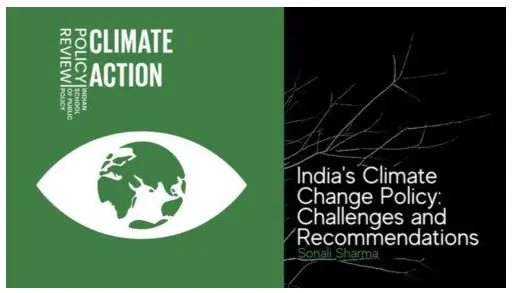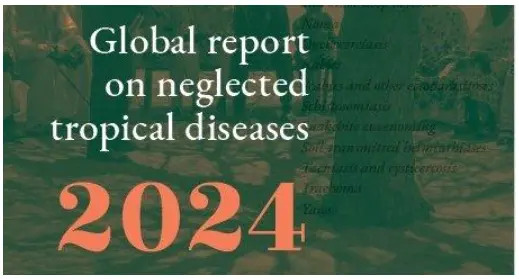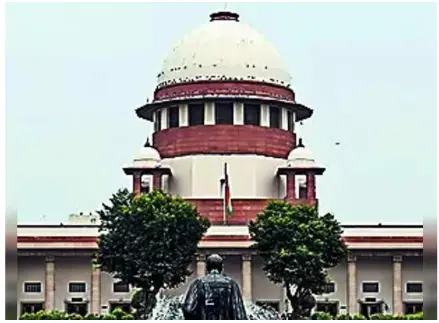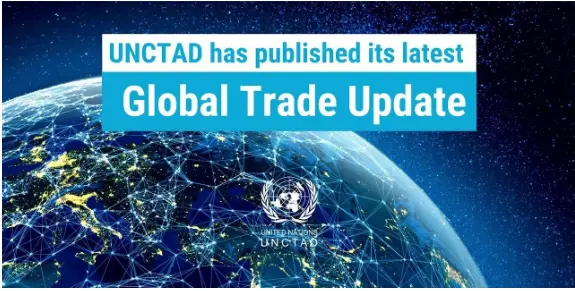Wednesday, 22nd May 2024
Undertrials' Disenfranchisement in India
In News: With the 18th Lok Sabha elections currently in progress, over four lakh undertrials across the country find themselves unable to participate in the voting process due to a broad legal prohibition.
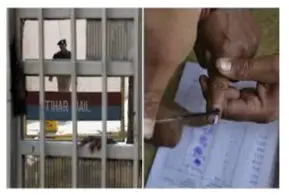
Why Undertrials Are Barred from Voting
- Legal Provisions: Section 62(5) of the Representation of the People Act prohibits individuals confined in prison, under a sentence of imprisonment or transportation, or in police custody, from voting in elections.
- Continued Electoral Status: Despite the prohibition on voting, individuals whose names are on the electoral roll remain electors.
- Exclusion of Preventive Detainees: Notably, the ban on voting does not apply to individuals subjected to preventive detention under prevailing laws.
- Supreme Court Rulings: The Supreme Court has upheld this provision, citing reasons such as resource constraints and the necessity to distance individuals with criminal backgrounds from the electoral process.
- Legal Framework: While the Supreme Court recognizes free and fair elections as part of the Constitution's 'basic structure', it distinguishes the right to vote (Article 326) and be elected as statutory rights, subject to regulations in laws like the Representation of the People Act, 1951.
- Constitutional Rights vs. Statutory Rights: Article 326 of the Indian Constitution enshrines adult suffrage, granting every citizen above 18 the right to vote unless disqualified due to factors like non-residence, unsoundness of mind, criminal convictions, or corrupt practices.
- Disqualification for Contesting Elections: Section 8 of the RPA, 1951 disqualifies individuals from contesting elections only upon conviction for specific criminal offenses, not merely upon being charged.
- Court's Stance on Criminal Charges: The Supreme Court has rejected pleas to disqualify individuals based on criminal charges or false affidavits, asserting that such alterations to the RPA, 1951 can only be made by the legislature.
- Exceptions to Disqualification: The Election Commission of India holds the authority to remove or reduce the period of disqualification under certain circumstances.
- Appeal Provisions: A disqualified Member of Parliament (MP) or Member of the Legislative Assembly (MLA) can still contest if their conviction is stayed pending appeal to a higher court.
Undertrials' Voting Rights: Should They Have the Right to Vote?
- Arguments in Favor
- Presumption of Innocence: Undertrials are presumed innocent until proven guilty, so denying them the right to vote may be seen as punitive.
- Representation and Political Participation: Allowing undertrials to vote ensures their interests are represented, including those related to prison conditions and the justice system.
- Disenfranchisement Concerns: Denying undertrials the vote could disenfranchise marginalized groups who may be overrepresented in pre-trial detention.
- Equality and Discrimination: Critics argue that denying undertrials the right to vote is discriminatory and violates principles of equality, unlike other countries with more nuanced laws.
- Arguments Against
- Public Safety Concerns: Allowing undertrials to vote may raise concerns about voter intimidation or interference, particularly in serious crime cases.
- Logistical Challenges: Facilitating voting within prisons poses administrative challenges, including ensuring ballot secrecy and preventing coercion.
- Temporary Nature of Detention: Undertrials' voting rights could be restored upon acquittal or completion of sentence.
- Punishment and Deterrence: Loss of certain rights, including voting, may serve as a deterrent against criminal behavior.
Legal Precedents Regarding Voting Rights in India
- Indira Gandhi v Raj Narain Case, 1975: Free and fair elections are part of India's constitutional 'basic structure', ensuring laws violating this can be struck down.
- Praveen Kumar Chaudhary V. Election Commission and Ors Case: The Delhi High Court clarified that voting is a statutory, not a fundamental, right.
- People’s Union of Civil Liberties (PUCL) vs Union of India Case, 2003: The Supreme Court clarified that voting is a constitutional but not a fundamental right.
- Anukul Chandra Pradhan, Advocate v. Union Of India & Ors Case, 1997: The Court upheld Section 62(5) of the RPA, citing prisoners forfeiting freedoms, logistical challenges, and excluding individuals with criminal backgrounds from elections.
Way Forward
- Inclusivity in Electoral Systems: Evolve electoral systems to include incarcerated individuals through methods like mobile voting units or absentee ballots.
- Focus on Rehabilitation: Provide opportunities for meaningful participation in decision-making processes to avoid further marginalization.
- Differentiation Between Convicts and Undertrials: Consider differing electoral rights based on legal status.
- Recognition of Voting as a Fundamental Duty: Incorporate the recommendation to make voting a fundamental right in the Indian Constitution, as suggested by the Swaran Singh Committee (1976).
|
UPSC Previous Year Questions Prelims (2021) Q. With reference to India, consider the following statements:
Which of the statements given above is/are correct? (a) 1 only Ans: (b) |
Source: TH
Iranian President Ebrahim Raisi Died in a Helicopter Crash
In News: Following a helicopter crash in Iran's northwest, President Ebrahim Raisi, the country's foreign minister, and multiple officials were discovered deceased.
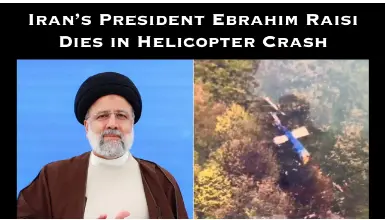
Authority of the President in Iran
- Role of the President
- The President of Iran operates under the authority of the Supreme Leader but holds significant power within the country's political system.
- They play a crucial role in the functioning of the nation, acting as a mediator between the legislature and the executive branches.
- The President appoints ministers and vice presidents and makes important decisions regarding foreign policy, as demonstrated during negotiations such as the Joint Comprehensive Plan of Action (JCPOA).
- Major Achievements of President Ibrahim Raisi
- Notable accomplishments of President Raisi include brokering the Iran-Saudi deal facilitated by China and advocating for the 'Axis of Resistance', an informal coalition of various regional groups.
Ramifications of Raisi’s Death in Iran
- Raisi's passing is anticipated to intensify the ongoing struggle between conservative and reformist factions within Iranian politics.
- Given Raisi's status as a hardline cleric and potential successor to the Supreme Leader, his death creates a significant leadership vacuum.
On Succession
- As per Iran's Constitution, the First Vice President assumes office in the event of the President's death or incapacitation.
- Mohammad Mokhber, appointed by President Raisi, currently holds this position and will serve as Acting President until a new election is conducted within 50 days.
India’s Concerns
- India, considering Iran as part of its extended neighborhood, closely monitors developments in the region, particularly concerning Iran's relationship with Israel and its involvement with regional groups like Hezbollah, Houthis, and Hamas.
Iran’s Response after Raisi’s Death
- Iran's reaction following President Raisi's death, including its stance on international matters and support for regional groups, will be of interest to India, given its proximity to Israel and its engagement with Iran on various fronts.
India-Iran Relations
- Despite challenges such as India's proximity to the US and Iran's nuclear program, both countries have historically maintained diplomatic ties and engaged in significant agreements, including those related to the Chabahar Port and mutual cooperation in various sectors.
India’s Response to President’s Death
- Prime Minister Narendra Modi expressed condolences over President Raisi's demise, and India observed a one-day state mourning on May 21 as a mark of respect.
Source: IE
Medical professionals Protection from consumer court Hearing
In News: SC Exempts Lawyers from Consumer Court Proceedings, Reconsiders Ruling for Medical Professionals
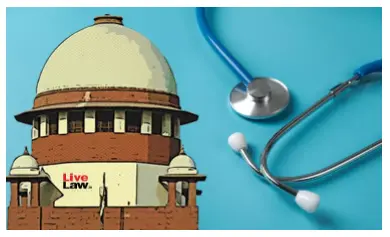
Understanding the Consumer Protection Act (CPA)
- Overview of the CPA
- The Consumer Protection Act (CPA) aims to safeguard consumers' interests concerning products or services they acquire.
- Initially enacted in 1986, the act underwent revision in 2019 to adapt to evolving circumstances.
- Provisions of the Act
- Consumers dissatisfied with a product or service can address grievances regarding deficiency through the consumer commission.
- Deficiency in service, as defined by the act, encompasses faults, imperfections, or inadequacies in quality, nature, or manner of performance mandated by law.
- Scope of Service Defined
- The 2019 CPA outlines service as offerings accessible to potential users, including banking, insurance, transport, housing construction, and entertainment, among others.
- However, services provided free of charge or under a contract of personal service are excluded from the act's purview.
- Legal Precedents and Interpretations
- In the Indian Medical Association vs. V P Shantha case (1995), the Supreme Court ruled that doctors fall under the consumer protection law, allowing suits for medical negligence.
- The recent case before the Supreme Court dealt with lawyers' inclusion under the CPA, where the court clarified that the law doesn't encompass professions or services rendered by professionals.
Arguments for Exemption of Medical Profession
- Advocates representing the Indian Medical Association contended that medical practitioners cannot be judged by fixed norms and thus shouldn't be covered by the CPA.
- Commission members lack specialized knowledge in medical matters, making it challenging to adjudicate complex medical issues.
Apex Court's Rationale
- The court emphasized that doctors owe certain duties to their patients and can be held liable for deficiency in service if these duties are breached.
- Commission members need not possess specific medical expertise; instead, the burden lies on parties to provide necessary evidence for informed decisions.
Source: IE
19th Session of United Nations Forum on Forest
In News: India recently took part in the 19th Session of the United Nations Forum on Forests (UNFF) held at the UN Headquarters in New York.
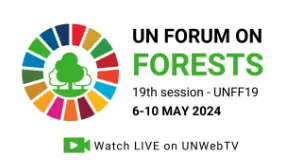
Key Takeaways from UNFF19
- India's Revised National Forest Policy: India emphasized forest fire prevention and management through recommendations and technological solutions in its revised National Forest Policy presented at UNFF19.
- Global Impact of Forest Fires: UNFF highlighted that approximately 100 million hectares of forest, equivalent to 3% of the world's total forest area, are affected by fires annually.
- Operationalizing the Global Fire Management Hub: India proposed the operationalization of the Global Fire Management Hub, a collaborative effort by UNEP and FAO, to share knowledge and experiences in mitigating forest fires.
- Universally Accepted Standards: India suggested establishing universally accepted standards, such as the Model Forests Act, for forest certification programs to ensure consistent and responsible forest management practices worldwide.
- Review of UN's Strategic Plan for Forests: The forum reviewed the UN's strategic plan for forests (2017-2030) and progress made in achieving global forest goals, including enhancing economic, social, and environmental benefits of forests and securing finances.
- Concerns about "Climatisation" of Forests: A UN report highlighted concerns about the "Climatisation" of forests, driven by market-oriented approaches for carbon sequestration, potentially reducing forests' ecological and social values.
- National Strategies: Indonesia presented its Forest and Other Land Use Net Sink 2030 strategy, while Malaysia committed to maintaining at least 50% of its territory under tree cover.
India's Highlighted Initiatives in Forest Management at UNFF19
- Success in Utilizing Technology: India showcased its success in using technology to manage forest fires, including real-time fire monitoring via remote sensing, online fire reporting through web portals, and ecological methods for restoration.
- Forest Fire Exposure: Based on forest inventory records, India revealed that 54.40% of its forests are exposed to occasional fires, 7.49% to moderately frequent fires, and 2.40% to high incidence levels.
- Global Ranking in Forest Area Gain: Globally, India ranks third in the net gain of average annual forest area between 2010 and 2020.
- Commitment to Conservation: India celebrated the completion of 50 years of Project Tiger and 30 years of Project Elephant, demonstrating its commitment to species conservation and habitat protection.
- Introduction of the 'Green Credit Program': India introduced the 'Green Credit Program' to incentivize tree plantation and restoration of degraded forest lands, strengthening climate action initiatives.
- Hosting of Country-Led Initiative: In 2023, India hosted a country-led Initiative under UNFF in Dehradun, focusing on forest fire management and forest certification, attended by representatives from 40 countries and 20 international organizations.
Key Facts About the Indian Forest Policy
- National Forest Policy, 1894: The policy prioritized timber production and custodial management, introducing forest classification with emphasis on protecting commercially valuable areas.
- National Forest Policy, 1952: This policy focused on national priorities like land-use management and environmental protection, securing resources like timber, pasture, and fuelwood for national development.
- National Forest Policy, 1988: Prioritized environmental stability, biodiversity conservation, and soil and water security, advocating for large-scale afforestation and social forestry programs.
- Draft National Forest Policy, 2018: Proposed revisions to address modern challenges like climate change and human-wildlife conflict, focusing on mitigating climate change and promoting public-private partnerships for forest restoration.
Conclusion
India's participation at UNFF19 highlighted its success in forest conservation and sustainable management, proposing comprehensive national forest policies with technological solutions and calling for international collaboration. While the High-Level Declaration remains under discussion, UNFF19 emphasized crucial steps towards achieving global forest goals.
|
UPSC Previous Year Questions Prelims (2016) Q. The FAO accords the status of ‘Globally Important Agricultural Heritage System (GIAHS)’ to traditional agricultural systems. What is the overall goal of this initiative?
Select the correct answer using the code given below: (a) 1 and 3 only (b) 2 only (c) 2 and 3 only (d) 1, 2 and 3 Ans: (b) Prelims (2021) Q2. At the national level, which ministry is the nodal agency to ensure effective implementation of the Scheduled Tribes and Other Traditional Forest Dwellers (Recognition of Forest Rights) Act, 2006? (a) Ministry of Environment, Forest and Climate Change (b) Ministry of Panchayati Raj (c) Ministry of Rural Development (d) Ministry of Tribal Affairs Ans-(d) Prelims (2012) Q3. A particular State in India has the following characteristics:
Which one among the following States has all the above characteristics? (a) Arunachal Pradesh (b) Assam (c) Himachal Pradesh (d) Uttarakhand Ans: (a) Mains (2022) Q. “The most significant achievement of modern law in India is the constitutionalization of environmental problems by the Supreme Court.” Discuss this statement with the help of relevant case laws. |
Source: PIB
Small Industries Development Bank of India
In News: Airbus Helicopters and the Small Industries Development Bank of India (SIDBI) have recently entered into a Memorandum of Understanding (MoU) to facilitate financing for the acquisition of Airbus helicopters in India.

Overview of Small Industries Development Bank of India (SIDBI)
- SIDBI was established on April 2, 1990, through an Act of the Indian Parliament.
- Its primary objective is to serve as the leading financial institution for the promotion, financing, and development of the Micro, Small, and Medium Enterprise (MSME) sector, as well as to coordinate the functions of institutions engaged in similar activities.
- The bank operates under the jurisdiction of the Ministry of Finance, Government of India (GoI).
- Initially, it was incorporated as a wholly owned subsidiary of the Industrial Development Bank of India (IDBI).
- Presently, the shares of SIDBI are held by the Government of India (GoI) and 22 other institutions, public sector banks (PSBs), and insurance companies owned or controlled by the Central Government.
- Its headquarters is located in Lucknow, Uttar Pradesh.
- SIDBI facilitates MSMEs in obtaining the necessary funds for their growth, marketing, development, and commercialization of their technologies and innovative products.
- The bank offers various schemes and financial services tailored to meet the individual requirements of different businesses.
- Financial support to MSMEs is provided through indirect/refinance to banks/financial institutions for onward lending to MSMEs, as well as direct finance in niche areas such as risk capital, sustainable finance, receivable financing, and service sector financing.
- SIDBI is entrusted with administering the Small Industries Development Fund and the National Equity Fund, which were previously administered by IDBI.
- To promote and develop the MSME sector, SIDBI adopts a 'Credit Plus' approach, which includes supporting enterprise development, skill upgrading, marketing support, cluster development, and technology modernization, among other initiatives.
Source: TH
Psychedelics
In News: Researchers are advocating for domestically conducted clinical trials of psychedelic drugs due to a surge in global trials and the limited success rate of existing medications in treating mental health issues.

Overview of Psychedelics
- Psychedelics are drugs that induce altered states of perception, behavior, consciousness, and thought, often leading to heightened awareness of the senses.
- The term "psychedelic" originates from two Greek words meaning mind or soul and manifesting, referring to substances that can alter a person's thoughts and perceptions, causing intense hallucinations.
- These drugs are divided into two main categories:
- Classical psychedelics, such as LSD, psilocybin, and DMT, which are believed to induce hallucinations by activating serotonin 5-HT receptors found throughout the body.
- Nonclassical psychedelics, including ketamine and MDMA, which bind to various receptors.
- Globally, five psychedelics are currently under clinical research for their potential use in treating mental health issues: psilocybin, LSD, MDMA, ketamine, and DMT.
- Most psychedelics function by increasing serotonin availability in the brain, binding to serotonin receptors on cell surfaces and causing specific effects.
- The United Nations' Convention on Psychotropic Substances, established in 1971, classifies approximately 200 psychotropic substances into four schedules based on their potential for abuse, with schedule I substances considered to have the highest abuse potential. However, the Convention does not specifically identify psychedelics or specify their number within the schedules.
Source: DTE
Scarborough Shoal
In News: Recently, the Philippines issued a challenge to China, urging it to subject Scarborough Shoal to international scrutiny following allegations that Beijing had caused destruction to the marine environment of the shoal.
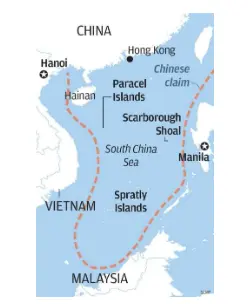
Overview of Scarborough Shoal
- Scarborough Shoal, also known as Scarborough Reef, is a collection of small rocks and islands forming a triangular shape in the South China Sea, situated approximately 220 kilometers from the Philippines.
- The largest island within the shoal encompasses a lagoon and spans approximately sixty square miles, while many smaller rocks barely protrude from the sea's surface, becoming fully submerged during high tide.
- Due to the deep waters surrounding the shoal, it serves as a thriving fishing area abundant with marine life, including commercially valuable shellfish and sea cucumbers.
- The territory is at the center of an ongoing dispute between the People’s Republic of China and the Philippines, with both nations claiming sovereignty over the area and exclusive rights to its waters.
- Despite the absence of constructed structures, China effectively controls Scarborough Shoal, maintaining a continuous presence with its coast guard since 2012.
- China asserts a historical claim to the shoal, referring to it as Huangyan Island and tracing ownership back to the Yuan Dynasty in the 1200s.
- Conversely, the Philippines base their claim on geographical proximity, as Scarborough Shoal is much closer to their main island of Luzon, housing the capital city, Manila, compared to its distance from China, which exceeds 500 miles.
Source: TOI
Genetic Drift
In News: Recently, genetic drift, rather than natural selection, has been identified as the primary factor driving speciation in endangered pupfish species.

Overview of Genetic Drift
- Genetic drift is a fundamental mechanism of evolution.
- It occurs when the frequency of variant forms of a gene, known as alleles, randomly increases or decreases over time in a population.
- This random fluctuation is due to chance events and random sampling influencing the survival and reproduction of individuals.
- Changes in allele frequencies are used to measure variations in the presence of alleles.
- Small populations are more susceptible to genetic drift than large populations, as larger numbers can buffer against chance events.
- Once initiated, genetic drift persists until the involved allele is either lost from the population or becomes the sole allele present at a specific locus, ultimately reducing genetic diversity.
- Genetic drift can lead to the increased frequency or fixation of initially rare alleles.
- It commonly occurs after population bottlenecks, which drastically decrease population size and can result in the loss of rare alleles and decreased genetic diversity.
- Genetic drift can cause new populations to be genetically distinct from their original population, suggesting a role in the evolution of new species.
Comparison with Natural Selection
- Genetic drift operates in contrast to natural selection.
- Natural selection posits that certain individuals within a population possess traits advantageous for survival and reproduction, leading to changes in the gene pool and traits over generations.
- Adapted organisms are more likely to survive and pass on beneficial genes, driving species to change and diverge over time.
- Unlike natural selection, genetic drift describes the impact of chance on populations in the absence of positive or negative selection pressures.
Source: PO
Critical Tiger Habitat
In News: Recently, the Supreme Court mandated the Rajasthan government to close down 68 mines operating within a 1-kilometre radius of the critical tiger habitat (CTH) surrounding the Sariska reserve.
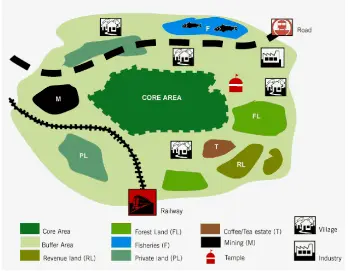
Overview of Critical Tiger Habitat
- Critical Tiger Habitat, also known as core areas of tiger reserves, are designated under the Wild Life Protection Act (WLPA), 1972.
- These areas are identified based on scientific evidence indicating the need to preserve them inviolate for tiger conservation while respecting the rights of Scheduled Tribes and other forest dwellers.
- The notification of Critical Tiger Habitat is carried out by the state government in consultation with an expert committee formed for this purpose.
Key Facts about Sariska Tiger Reserve
- The Sariska Tiger Reserve is situated in the Alwar district of Rajasthan, nestled amidst the Aravali Hills.
- It holds the distinction of being the world's first reserve to successfully relocate tigers.
- Besides tiger conservation, Sariska is renowned for its ancient temples, palaces, and lakes such as Pandu Pol, Bhangarh Fort, Ajabgarh, Pratapgarh, Siliserh Lake, and Jai Samand Lake.
- The topography of Sariska features a rocky landscape, scrub thorn arid forests, grasslands, hilly cliffs, and semi-deciduous woodlands.
- Its vegetation corresponds to Northern Tropical Dry Deciduous Forests and Northern Tropical Thorn Forests, characterized by Dhok trees, salar, kadaya, gol, ber, Banyan, gugal, bamboo, kair, adusta, among others.
- Sariska Tiger Reserve is home to a diverse range of wildlife, including leopards, sambars, chitals, nilgais, and various other species.
Source: IE
Port of Call
In News: Spain recently declined permission for a ship bound for Israel, carrying arms, to make a stop at the southeastern port of Cartagena.
Overview of Port of Call
- A port of call serves as an intermediate stop for a ship during its scheduled journey, primarily for cargo operations or to transport supplies or fuel. It is distinct from the ship's home port.
- These ports originally developed as anchoring points on major sea routes for refueling, obtaining water, and acquiring food supplies. Over time, they evolved into commercial ports.
- Examples of port of call include Aden, Honolulu, and Singapore, which have developed into significant maritime hubs.
- Sometimes referred to as a port of refuge, it is typically not a permanent part of a ship's itinerary but may be visited for various reasons such as cargo operations, replenishing supplies, loading and unloading cargo, or in case of emergencies.
- Depending on the purpose of the stopover, a port of call may be categorized into subtypes like dry harbor for vessel maintenance, cargo harbor for cargo handling, and fish harbor for fishery-related activities.
Source: Reuters
Critical times call for strong judicial adjudication
In News: Judicial review must be robust, prompt, and unequivocal when addressing cases involving statutes that are evidently unconstitutional or contentious.
Overview of Supreme Court's Role in Assessing Legislation
- Reflection on Past Decisions: The top court should have the capacity to reflect on its past decisions and understand the political implications of its actions, especially during crucial moments.
- Assessment of Citizenship (Amendment) Act (CAA): The Supreme Court of India will evaluate the constitutionality of the Citizenship (Amendment) Act (CAA) and its accompanying regulations.
Challenges Arising from Recent Legislative Ambiguity
- Ambiguity in CAA Rules: Recent ambiguity in the CAA Rules regarding the status of individuals denied citizenship has raised concerns, particularly regarding the potential detention of those whose citizenship requests are rejected.
- Worries about Dual Citizenship: Some petitioners have expressed worries about foreign applicants retaining dual citizenship, which contradicts the essence of the original Act and creates uncertainty.
Traditional Judicial Approach vs. Contemporary Challenges
- Presumption of Law Validity: Traditional legal doctrine presumes legislative actions to be valid unless they clearly violate constitutional principles, as reiterated in the case of Manish Kumar vs Union Of India (2021).
- Challenges of Populist Legislation: However, this approach may fall short in addressing contemporary challenges posed by populist regimes worldwide, which often introduce legislation with specific motives and manipulate electoral processes.
Impact on Democratic Foundations & Judicial Authority
- Diminished Counter-Majoritarian Role: Persisting with an outdated presumption of law validity may diminish the counter-majoritarian role that constitutional courts are expected to fulfill in critical times.
- Erosion of Judicial Authority: Failure to intervene in legislation that disregards constitutional principles can erode the judiciary's authority, impacting the foundation of democracy.
Instances of Judicial Intervention and Non-Intervention
- Examples of Intervention: Instances such as Vivek Narayan Sharma vs Union of India (2023) and judgments on Article 370 demonstrate the consequences of failure to intervene in legislation.
- Anoop Baranwal vs Union of India (2023): This case marked a significant judgment advocating for an independent body to select the Election Commission of India (ECI), but subsequent legislation reinstated executive dominance.
- Jaya Thakur vs Union of India (2024): Despite challenges, the Court declined to halt the operation of a statute, potentially undermining democracy.
Cases of Targeted Legislation and Their Implications
- CAA and Triple Talaaq Cases: The CAA and the Muslim Women (Protection of Rights on Marriage) Act (2019) exemplify targeted legislation, impacting specific groups and inadvertently exacerbating social issues.
Comparative Perspective: U.S. Legal Precedents
- Evolution of Judicial Scrutiny: In the U.S., there's a growing need for more thorough judicial scrutiny in the face of legislative actions driven by malice, as argued by scholars like Susannah W. Pollvogt.
- United States Dept. of Agriculture vs Moreno (1973): Legislative actions targeting specific groups reflect discriminatory intent, requiring judicial scrutiny.
Indian Legal Precedents for Judicial Intervention
- Ashoka Kumar Thakur vs Union of India (2007): The Supreme Court effectively halted the implementation of parliamentary legislation concerning quota allocations.
- Rakesh Vaishnav vs Union of India (2021): Judicial intervention led to the stay order on controversial farm laws, eventually leading to their withdrawal.
Conclusion and Recommendations
- Robust Judicial Review: In cases involving unconstitutional or divisive statutes, the process of judicial review should be robust, immediate, and unequivocal.
- Heeding Lessons from Past Decisions: The Supreme Court should comprehend the political ramifications of its actions, especially during critical junctures, to uphold democratic principles effectively.
Source: TH
Share the article
Edukemy’s Current Affairs Quiz is published with multiple choice questions for UPSC exams
MCQ
Get Latest Updates on Offers, Event dates, and free Mentorship sessions.

Get in touch with our Expert Academic Counsellors 👋
FAQs
UPSC Daily Current Affairs focuses on learning current events on a daily basis. An aspirant needs to study regular and updated information about current events, news, and relevant topics that are important for UPSC aspirants. It covers national and international affairs, government policies, socio-economic issues, science and technology advancements, and more.
UPSC Daily Current Affairs provides aspirants with a concise and comprehensive overview of the latest happenings and developments across various fields. It helps aspirants stay updated with current affairs and provides them with valuable insights and analysis, which are essential for answering questions in the UPSC examinations. It enhances their knowledge, analytical skills, and ability to connect current affairs with the UPSC syllabus.
UPSC Daily Current Affairs covers a wide range of topics, including politics, economics, science and technology, environment, social issues, governance, international relations, and more. It offers news summaries, in-depth analyses, editorials, opinion pieces, and relevant study materials. It also provides practice questions and quizzes to help aspirants test their understanding of current affairs.
Edukemy's UPSC Daily Current Affairs can be accessed through:
- UPSC Daily Current Affairs can be accessed through Current Affairs tab at the top of the Main Page of Edukemy.
- Edukemy Mobile app: The Daily Current Affairs can also be access through Edukemy Mobile App.
- Social media: Follow Edukemy’s official social media accounts or pages that provide UPSC Daily Current Affairs updates, including Facebook, Twitter, or Telegram channels.

